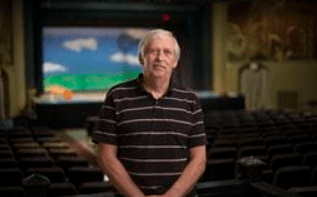The Challenge
Pat Mitchell, a sixty-six-year-old grandfather who operates a wood shop, was enjoying a typical Sunday morning in Latrobe, Pennsylvania: relaxing in front of the TV and drinking coffee. But, as he went to pour a second cup of coffee, he suffered from a stroke.
"And just like someone had flipped a switch, the lights went out," he explains. "My right side did not function, and I couldn't speak."
Pat fell to the floor in his kitchen, where he remained for several hours before his grandchildren and wife discovered him. Because immediate treatment can minimize the long-term effects of a stroke, the delay in discovering him was potentially disastrous.
The Path to UPMC
The paramedics who arrived at the scene were tasked with making the important decision of where to bring Pat for treatment: drive him to a local hospital or airlift him to UPMC Presbyterian, with its Comprehensive Stroke Center. They chose the latter, a decision that Pat is grateful was made on his behalf.
"Thank God that they did," Pat reflects. "They flew me to UPMC, and they operated right away."
The Solution
Stroke patients are often treated with an intravenous drug called tPA, but the doctors treating Pat were unsure if this alone would be effective in clearing his blood clots due to the delay in getting him to the hospital.
tPA is most effective if used within 60 minutes and may be used up to three hours of the onset of stroke.
Because several hours had passed since he suffered his stroke, Pat's doctors believed that the best approach to clearing his blood clots was instead a groundbreaking technique called mechanical thrombectomy. In this procedure, which UPMC helped pioneer, a catheter is threaded into an artery at the groin and moved up through the neck until it reaches the blood clot causing the stroke. Using x-ray guided imaging, a stent retriever is inserted into the catheter. The stent reaches past the clot, expands to stretch the walls of the artery so blood can flow, and is pulled backward, removing the clot.
This new technology allows doctors to successfully treat strokes that previously would have been untreated. That translates into more brain saved and better patient outcomes.
The Results
When Pat arrived at UPMC Presbyterian, he was unable to speak at all, and his right side was completely paralyzed.
But, within hours of the mechanical thrombectomy procedure, Pat was able to speak and respond to commands. By days two and three, he was able to walk, and he continued his recovery after he was discharged to home.
After Pat returned home, the medical team at UPMC provided comprehensive outpatient rehabilitation to ensure that he continued to improve. Pat participated in physical therapy and speech therapy, and takes medications that help prevent another stroke.
Pat, who was afraid of losing his independence, continues to make forward strides and today, he estimates that he is 95% back to normal. His favorite activities include exercising, completing crossword puzzles, and working in his wood shop.
"I'm extremely lucky to be able to do that," says Pat. "It means a lot to be able to do it for the craft." Reflecting on his experience with UPMC, he adds, "The care I received from the EMTs to the surgical team to the nurses to physical therapy has been phenomenal. The surgeons there are top notch in the country."

















